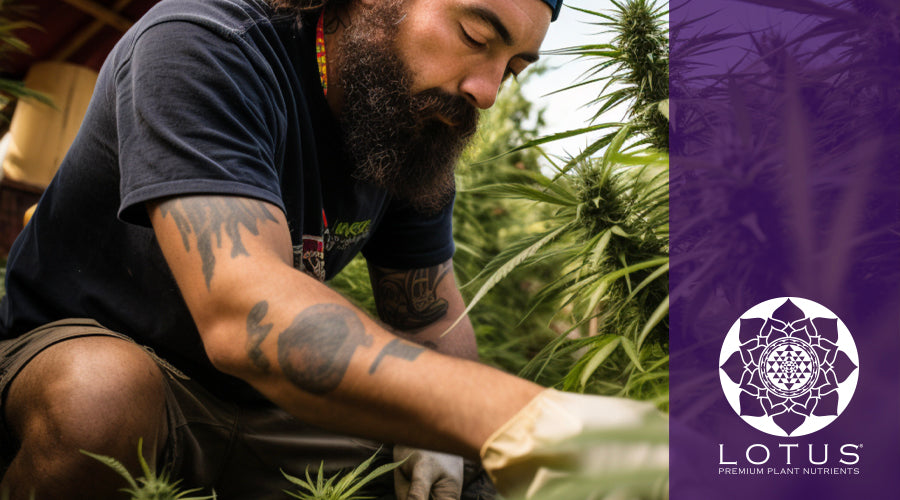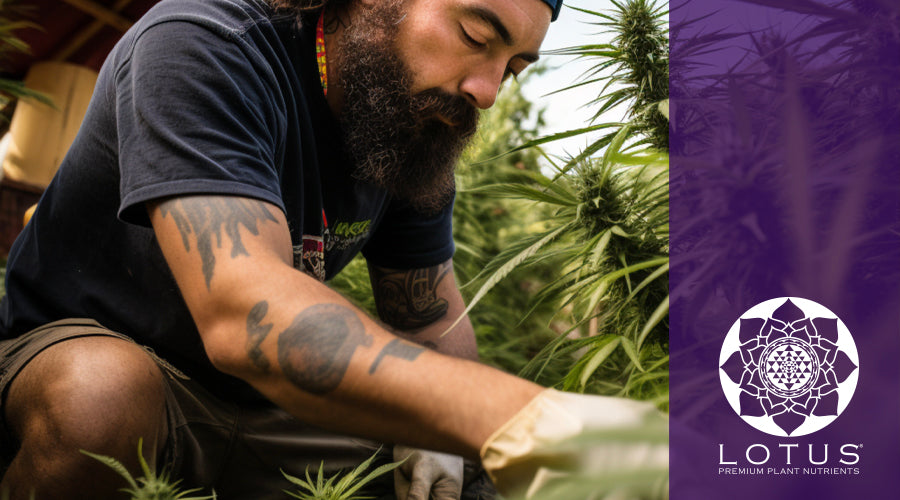
Should you trim leaves during flowering?

To Trim or Not to Trim: Should you trim leaves during flowering?
In the gardening world, a perpetual debate often sparks passionate discussions among enthusiasts: whether to trim leaves during the flowering stage. This practice, known as leaf pruning or defoliation, has ardent supporters and vocal critics. But like many aspects of gardening, the decision to trim leaves during flowering isn't a one-size-fits-all solution.
Let's delve into the reasons behind both sides of the argument and explore the factors to consider when making this decision.
The Case for Trimming Leaves
Proponents of leaf pruning during the flowering stage argue that removing excess foliage can yield several benefits for the plant and its ultimate yield. Here are some reasons they advocate for leaf trimming:
Increased Light Penetration: Removing some leaves can allow more light to reach the lower parts of the plant. This can stimulate the growth of buds and flowers that the dense foliage might have overshadowed.
Better Air Circulation: A well-ventilated plant is less prone to mold, mildew, and other diseases. Trimming leaves can create better airflow through the plant, reducing the risk of such issues.
Resource Allocation: By trimming away non-essential leaves, the plant can focus its energy on producing larger, denser buds. This can potentially lead to higher yields and more potent flowers.
Even Canopy Development: Leaf pruning can result in a more even distribution of buds and flowers across the plant. This can be especially beneficial in indoor gardening setups with limited space and light.
The Argument Against Trimming Leaves
On the other side of the spectrum, opponents of leaf trimming during flowering emphasize the importance of leaves and argue against the practice. Here are some of their key points:
Photosynthesis and Nutrient Production: Leaves play a crucial role in photosynthesis, the process through which plants convert light into energy. Removing too many leaves can hinder the plant's ability to produce nutrients, potentially affecting overall growth and flower development.
Stress and Recovery: Trimming leaves during flowering can cause stress to the plant. This stress can disrupt the flowering process and lead to recovery periods that might delay the plant's growth and flowering timeline.
Protection from Light and Heat: Leaves also act as a natural shield, protecting the plant from excessive light and heat. Removing too many leaves can expose the plant to stressors that might negatively impact its development.
Genetic Variation: Different plants respond differently to leaf trimming based on their genetics, strain, and environmental conditions. A practice that works well for one plant might not yield the same results for another.
Factors to Consider
Plant Type: The type of plant you're growing plays a significant role in whether leaf trimming is advisable. Some plants tolerate defoliation better than others.
Growth Stage: Trimming leaves during the early flowering stage might have different consequences compared to doing so later in the flowering process.
Environmental Conditions: Factors such as light intensity, humidity, and temperature can influence how a plant responds to leaf trimming.
Experience: Your level of gardening experience can impact your success with leaf pruning. Novices might want to tread carefully, while experienced gardeners might have a better understanding of their plants' needs.
Potential Risks and Best Practices for Leaf Trimming During Flowering
Potential Risks of Leaf Trimming
Before deciding to trim leaves during flowering, it's essential to be aware of the potential risks associated with this practice:
Shock and Stress: Removing a significant number of leaves can shock the plant, leading to stress and a temporary slowdown in growth. This can impact flower production and overall plant health.
Nutrient Depletion: Leaves are primary sites for nutrient storage. Trimming too many leaves can deplete the plant's nutrient reserves, affecting its ability to produce flowers and sustain healthy growth.
Delayed Recovery: Depending on the extent of leaf pruning, plants might need time to recover and regrow the lost foliage. This can delay the flowering timeline and potentially reduce overall yield.
Susceptibility to Pests and Diseases: While proper leaf trimming can improve airflow and reduce disease risk, over-trimming can make plants more susceptible to pests and infections by removing the natural barriers that leaves provide.
Best Practices for Leaf Trimming
If you're inclined to try leaf trimming during flowering, here are some best practices to follow:
Moderation: Start with a conservative approach. Rather than removing all leaves at once, consider a selective approach by pruning only the largest, shading leaves. This can help maintain some level of photosynthesis and nutrient production.
Timing: If you decide to trim leaves, do so early in the flowering stage. This gives the plant time to recover and adjust to the changes before it dedicates more energy to bud development.
Gradual Reduction: Instead of a single drastic pruning session, consider gradual leaf reduction over a few sessions. This can help minimize shock and stress to the plant.
Monitor Response: Keep a close eye on how your plants respond to the trimming. If you notice signs of stress, slowed growth, or nutrient deficiencies, you might need to adjust your approach or revert to regular care practices.
Hygiene: Use clean, sharp tools to avoid introducing pathogens to the plant. Disinfect your tools before and after each use to prevent the spread of diseases.
Support and Training: If you're aiming for an even canopy, consider employing training techniques like low-stress training (LST) or screen of green (SCROG). These methods encourage lateral growth and can reduce the need for extensive leaf trimming.
The Middle Ground: Strategic Leaf Trimming
A compromise between the proponents and opponents of leaf trimming could involve strategic and selective pruning. Instead of an all-or-nothing approach, you could identify specific areas where trimming might be beneficial, such as dense inner foliage that receives limited light.
By targeting only the areas that hinder light penetration and air circulation, you can potentially reap the benefits of leaf trimming while minimizing the risks associated with excessive pruning.
Whether to trim leaves during flowering remains contentious and the decision ultimately lies in the hands of the gardener. It's crucial to balance the potential benefits and risks, considering factors such as plant type, growth stage, and environmental conditions. Whether you choose to trim leaves, opt for strategic pruning, or refrain from cutting altogether, a thoughtful and informed approach is key to ensuring the health and success of your plants throughout their flowering journey.
Remember, gardening is a learning experience, and experimenting with different techniques can lead to a deeper understanding of your plants' unique needs and behaviors.
